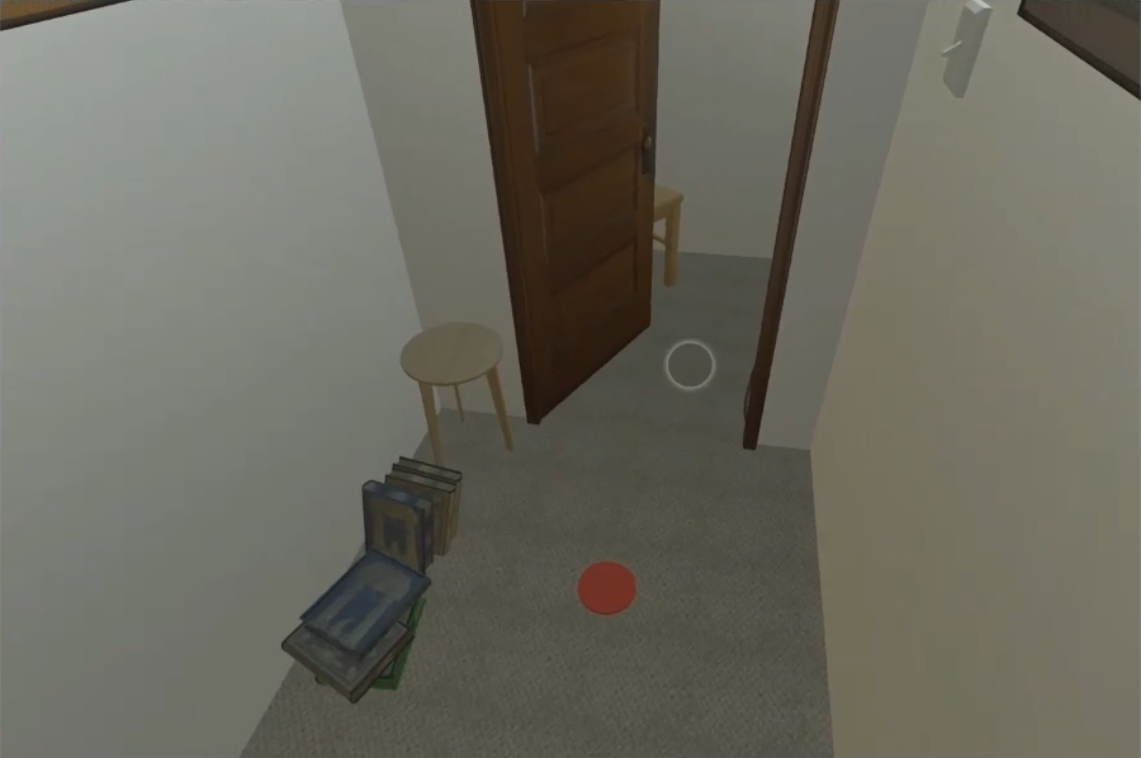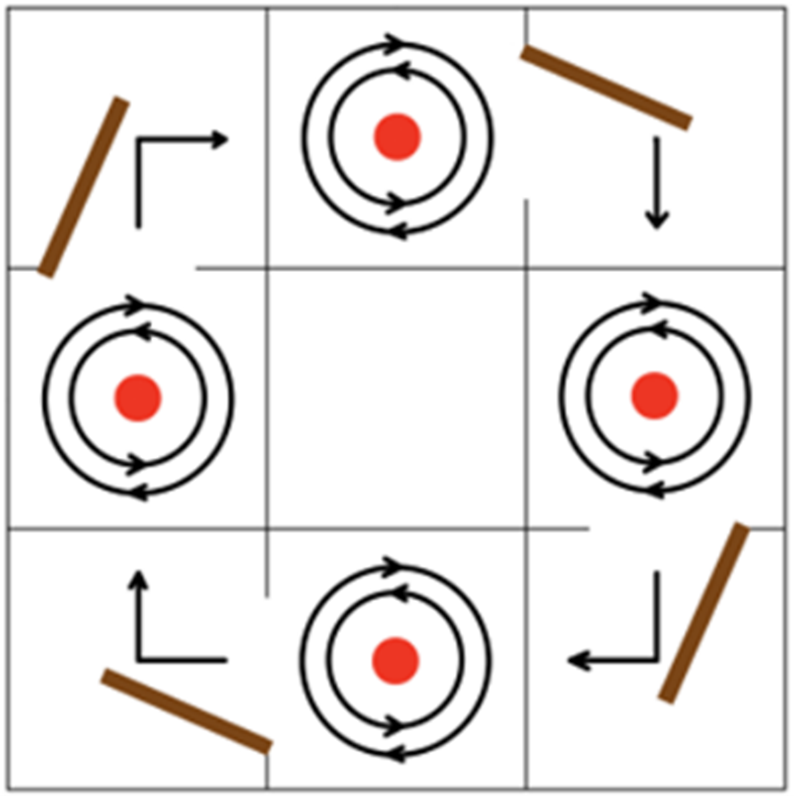Objective: To assess the efficacy and the safety of a weight-shift (WS) intervention used in a complex and demanding gait context
Background: Freezing of gait (FoG) in people with Parkinson’s (pwPD) increases risk of falling and reduces quality of life. When preparing to walk people need to shift their weight to their non-stepping limb to unload and allow the leading limb to move forward. However, this unconscious mechanism is often impaired in pwPD+FoG. Previous studies used a step-in-place paradigm to show that a WS intervention could improve the success of forward and turning steps following a freeze. However, due to the nature of this reductionist paradigm, results cannot be generalised
Method: 19 pwPD+FoG completed the tasks ON medication. People wore a VR headset showing a complex domestic scene [Fig 1]. People navigated the scene which consisted of 4 corridors arranged in a square-like pattern (3.6mx3.6m). pwPD+FoG were asked to stop and turn on the spot when reaching a red target in the centre of each corridor[Fig 2].
pwPD+FoG were assessed at Baseline and post-WS training, delivered via a training video. Following the training, participants were asked to try to use the strategy shown in the video when attempting to initiate walking or turning. FoG events and successful/unsuccessful attempts to step from a freeze were identified through the annotation of video recordings. The following outcomes were calculated: FoG Incidence, FoG duration, ratio between successful/unsuccessful steps following FoG (S/U), and mean scores for reported safety/efficacy of the intervention
Results: Outcomes are reported in Table 1. 7 people experienced FOG in both conditions. S/U ratio significantly increased (p=.034) from Baseline to the post-WS. FoG incidence and duration did not change. Participants perceived the intervention as safe (8.7±1.1/11) and effective (7.5±2.3/11)
Conclusion: The WS training had a clear effect in supporting step initiation from a freeze, even during complex walking tasks. Increased step success did not appear to compromise balance safety. Compared to previous studies, our results indicate that the increased task complexity and mode of intervention (video Vs in-person training) may slightly reduce the efficacy of the WS strategy. Nevertheless, the current results are very promising, as participants were generally able to adapt the strategies to their required action (forward vs turning steps).
To cite this abstract in AMA style:
Y. Russo, P. Leveridge, J. Ye, Z. Wang, M. Wilson, A. Nieuwboer, S. Lamb, E. Kal, M. Norris, W. Young. Can a single-session of weight-shift training support people with Parkinson’s step from a freeze? [abstract]. Mov Disord. 2023; 38 (suppl 1). https://www.mdsabstracts.org/abstract/can-a-single-session-of-weight-shift-training-support-people-with-parkinsons-step-from-a-freeze/. Accessed January 7, 2026.« Back to 2023 International Congress
MDS Abstracts - https://www.mdsabstracts.org/abstract/can-a-single-session-of-weight-shift-training-support-people-with-parkinsons-step-from-a-freeze/



